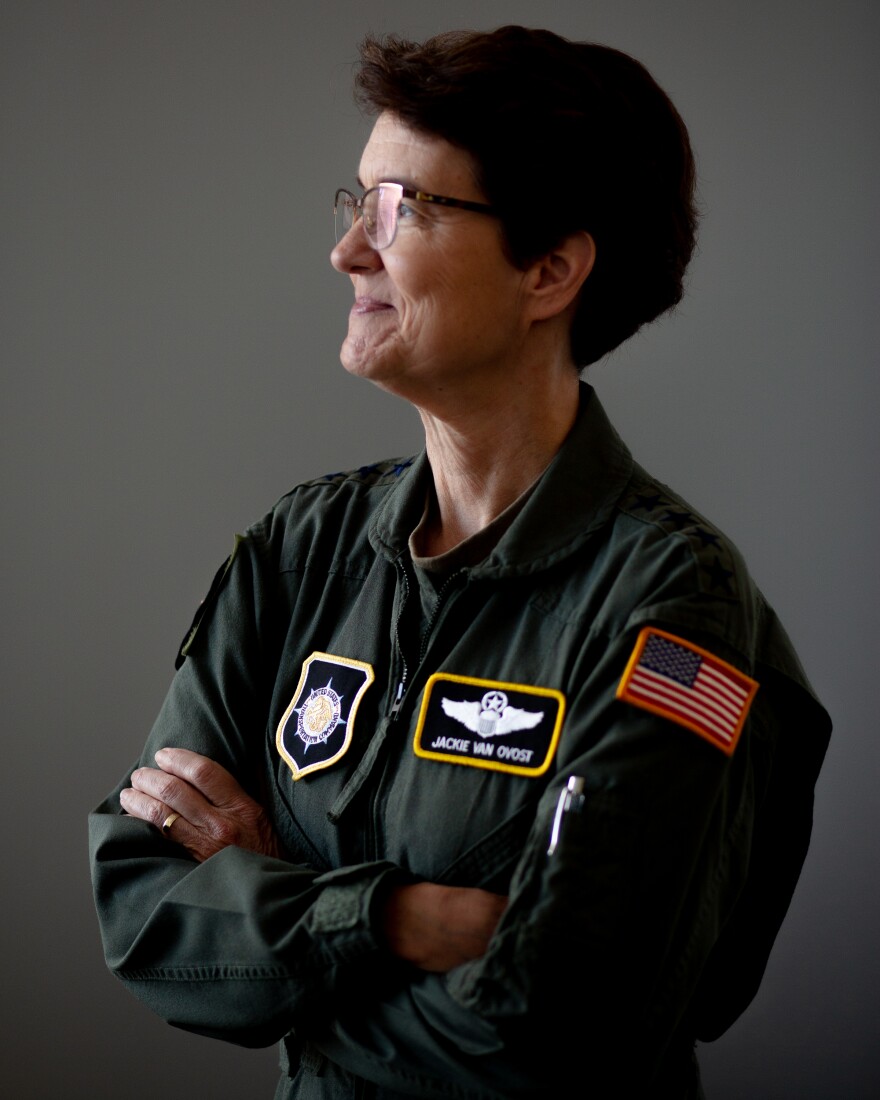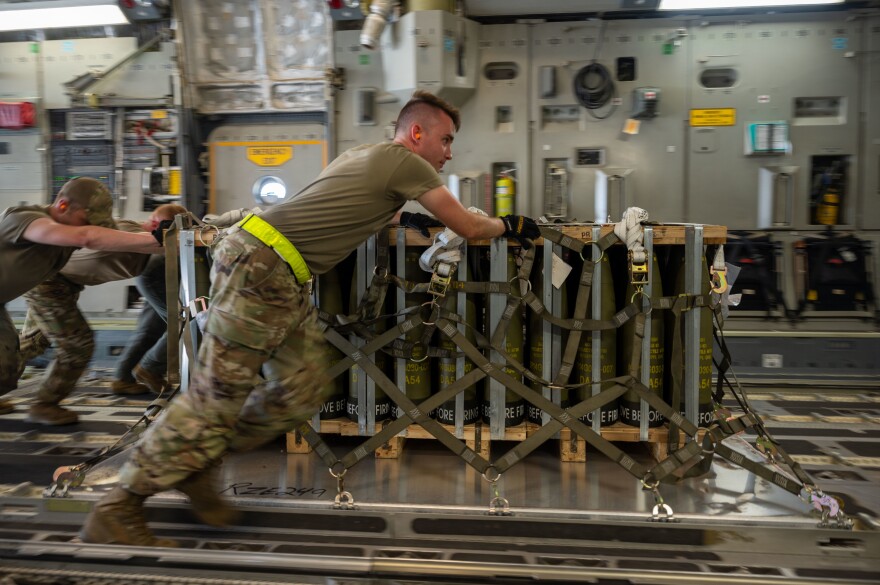While U.S. troops are not fighting on the ground in eastern Europe, the American military is significantly involved in the ongoing war, providing weapons, supplies, and humanitarian aid to Ukraine.
It’s a point Ukrainian President Volodymyr Zelenskyy emphasized in his address to Congress just before Christmas.
“Ukraine never asked the American soldiers to fight on our land instead of us,” he said. “I assure you that Ukrainian soldiers can perfectly operate American tanks and planes themselves.”
At the time of Zelenksyy’s address, the U.S., Europe and other G7 countries had sent $93 billion in security, economic and humanitarian aid, said Conor Savoy, a senior fellow at the Center for Strategic and International Studies.
The U.S. added another $45 billion to that total a few days later with the passage of the omnibus spending bill.
“We’ve seen no overt American military action in Ukraine,” Savoy said. "Ukraine has demonstrated its willingness and capability to defend itself if given the weapons, support and equipment it needs."
Savoy, whose work focuses on issues related to U.S. foreign assistance policy, said that's a key difference between the Ukraine war and the conflicts earlier this century in Iraq and Afghanistan.
“If you look at what we’re providing, it’s advanced weapons systems, anti-tank rockets, rifles, small-arms ammunition, body armor,” he said. “It’s humanitarian aid, tents, generators. It’s food aid and economic assistance that’s going directly to the government of Ukraine.”
Those deliveries are a key part of how the U.S. military remains closely tied to the conflict. On a near daily basis, a plane, ship, or other vehicle is loaded with supplies and sent to Ukraine.
“We are helping Ukraine defend itself against the naked aggression from Russia,” said Gen. Jacqueline Van Ovost, who leads the U.S. Transportation Command (TRANSCOM).

Her command is responsible for all of the military’s logistical movements, inducing the Ukraine shipments.
“The air defense systems, the artillery systems — know that it came from mainly the United States, and about 25 other countries have helped,” Van Ovost said. “We brought it from around the world as far as the Indo-Pacific.”
TRANSCOM identifies where items are located and then determines the best option to get them to Ukraine, be that air, sea, rail or road, she said.
The U.S. is in a unique position to provide this support because of the country’s wealth and prowess with military logistics, Savoy said.
“While other countries can replicate it, it’s always at a much smaller scale,” he said. “Countries have maybe three or four large transport aircraft versus the couple hundred that the United States has.”
TRANSCOM also relies on civilian companies to make the deliveries.
“For the air shipments that support Ukraine with equipment and munitions, about two-thirds of those flights are done by our commercial partners where they contract with us,” Van Ovost said.
At this point in the conflict, Van Ovost’s command consistently delivers essential military equipment without issues, she said, noting that TRANSCOM also keeps in close contact with Ukrainian leaders to ensure the U.S. is sending the most critical humanitarian aid.
“Right now because of the winter, they pushed up the tents, the heaters, the propane, and they’ve moved down some other things,” she said. “It doesn’t mean they don’t need it; they need it all because they continue to get bombed.”
Van Ovost said the U.S. is also helping Ukraine shore up its air defense. Late last year, the U.S. pledged to send Patriot missile systems. Ukrainian officials said the missiles will help defend against Russian drone attacks, which are playing a central role in Russia's assault on Ukraine's electrical infrastructure.
Ukraine also is asking for transformers and generators, Van Ovost said.
But even with the U.S. military’s ability to deliver goods at nearly any time, it will still be difficult to send some of these items, Savoy said.
“People don’t understand what a challenge this is going to pose,” he said. “We can’t just go to a warehouse run by Siemens, GE, or some other large western industrial conglomerate and start pulling transformers and other grid components off the shelf.”
Each of these components can take several months to produce, Savoy said.
Without power for running water and heat, millions more Ukrainians may decide to leave their homes this winter in search of better conditions elsewhere in Europe, he said.
“The Ukrainian people are incredibly resilient and I think we’ve all been astounded by that resilience and bravery,” Savoy said. “But at some point it is a humanitarian crisis and people will vote with their feet.”
This story was produced by the American Homefront Project, a public media collaboration that reports on American military life and veterans. Funding comes from the Corporation for Public Broadcasting.




